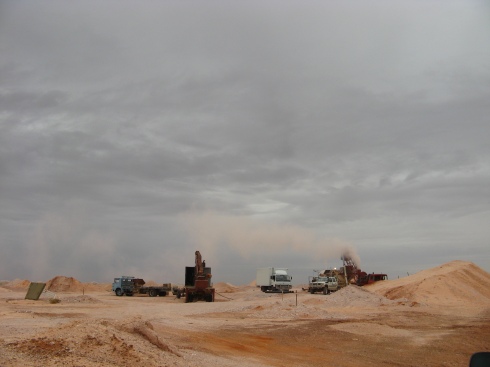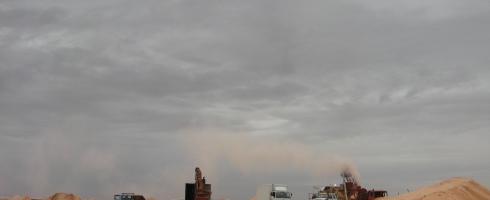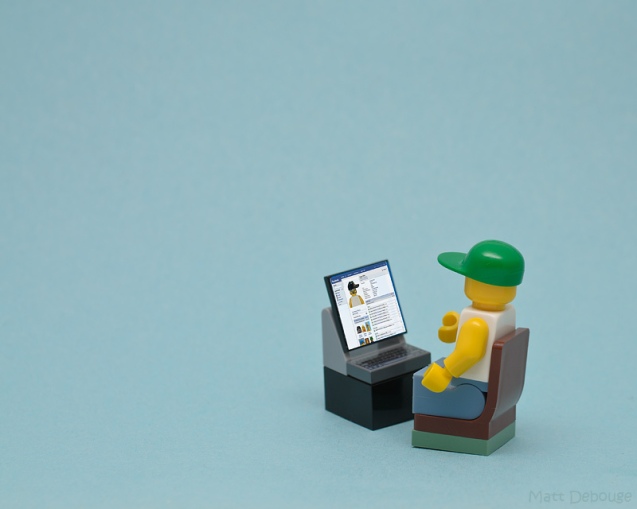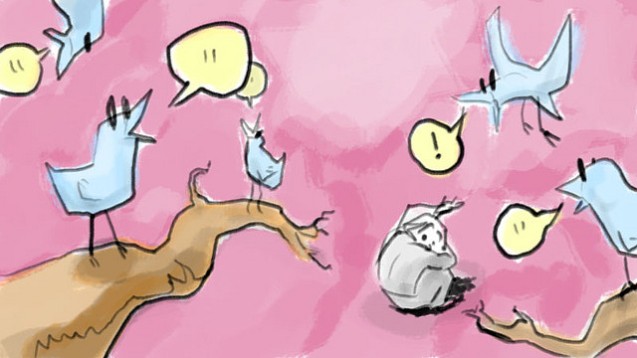My latest news feature for BBC Business News Online– published today.
A bit of blather first. What’s kinda funny is that I visited a mine this week – I was at Big Pit in Blanaevon, Wales, on Monday. I’m a big, big fan of mining and visiting mines: I’ve been to the salt mines in Austria, iron ore mine in Broken Hill, Australia, opal and gypsum mines in Coober Pedy, Australia, silver and tin mines in Bolivia and now a coal mine in Wales.
I think it’s fascinating and important to see how the resources we never think about but that shape our lives come out of the ground, and to know the conditions the people who haul it out the ground have had to endure.
I got lucky on the Big Pit tour because one of my fellow tour-takers is a mining engineer having worked extensively in South Africa, and he told us that it is still law in South Africa that every mine must still have a canary. In this technological, safety-savvy era I’d have thought that method of checking for gas build-ups was long gone, but sometimes the simplest, cheapest methods are the best.
On my mine tours I’ve observed every level of safety preparedness – from world-class cutting-edge super machines, down to nil. Right now as you read this on your laptop or mobile, children are mining the raw materials in Latin America, Africa and Asia that will eventually be made into the components that make up your laptop or mobile. And the chances are, they are not wearing any of the safety gear you’d hope, the shoes and clothing you’d hope for very hot/very cold/very wet conditions, may not have access to water or sanitation or proper ventilation as they work, and are likely to be missing out on both education and decent pay and rights. (Let’s not even start on the topic of why children are working at all). So mining is worth reading about as we should not walk through life ignorant of this: though these are not issues I had a chance to explore in the piece below, you can Google all of that stuff and learn at will. Or go and visit a mine.
One more quick note. If you’re interested in the big cheeses running big mining firms, I interviewed the finance director of Rio Tinto, the FTSE-100 resources giant, a couple of years ago. You can read that interview here
And here’s the BBC piece.
Australia’s resources minister, Martin Ferguson, has caused a stir with his assertion that the country’s mining boom, one of the biggest drivers of its economic growth, is “over”.

Opal mining in Coober Pedy, Australia. Nothing whatsoever to do with this article except it’s a form of mining, and a photo I took myself. 2007.
As he acknowledged, the state of the global economy has depressed demand for Australia’s minerals and led to sagging commodity prices.
But those commodity prices have not just taken a tumble in Australia.
They have fallen globally, seemingly because Chinese economic growth has finally started to slow.
That is in part because European demand for its products has slowed. So China has started to produce less of those products, and needs smaller quantities of raw materials such as iron, copper, zinc and gold to do so.
Could Mr Ferguson’s call on Australian commodities also be true for the global commodities market at large?
Exit the dragon
You know how you so frequently see “Made in China” stamped on the back of your toys, phones, in clothing labels, and on your food packets?
To make that volume of products that quietly dominate our lives, China has had to suck in a huge amount of the world’s commodities.
According to the International Monetary Fund (IMF), in 2010, China consumed 40% of the world’s base metals – aluminium, copper, lead, tin, zinc or nickel, all widely used in manufacturing the gadgets and goods we use every day – and 23% of the world supply of major agricultural crops like wheat and corn.
And to build the cities, roads, ports and factories needed to produce that stuff, China has staged a construction boom – upping its need for commodities even more.
But Chinese policymakers have decided it is time for their economy to move away from that.
Thomas Helbling, a research chief at the IMF, said that China’s latest five-year plan for growth “strives to move the economy from investment- to consumption-driven growth”.
In other words, it wants to stop pumping cash into importing commodities and building infrastructure, and focus on selling products and services to its growing middle class instead.
Changing it up
As China buys less raw material, the effect of its dominance becomes apparent and global prices are now going down.
That is having an impact on economies as a whole, as Australia’s Mr Ferguson suggested.
Australian mining giants recently disappointed the country’s politicians. One, BHP Billiton, said it would put on hold its Olympic Dam extension project, reportedly worth as much as $30bn, which it was hoped would create 25,000 jobs in South Australia.
Some thought BHP Billiton’s decision was evidence of China’s change in growth expectations beginning to impact global demand, and other economies as a whole.
And having been protected from global recession by their mining boom, Australians do not want to hear that this is now under threat.
But BHP Billiton said it thought shrinking commodities demand would stabilise in 2013, including from China.
Ruchir Sharma, head of global emerging markets equity at Morgan Stanley, told the BBC that China’s economy was simply maturing, but that resulting lower global commodity prices could be good for emerging markets.
“China is moving to a much lower growth trajectory,” Said Mr Sharma.
“It is maturing, just as Japan did in the 1970s, [South] Korea in the 1980s and Taiwan’s economy in the 1990s.
“It has become too large to grow that quickly, and it is becoming less commodity intensive.”
Mr Sharma thought lower commodity prices would benefit a lot of developing countries such as Turkey and India, and even developed countries including the US.
And he added that the price of oil was more likely to fall than to keep rising, in his view.
“If China’s slowdown is managed right, it will be OK,” he said.
Supply and demand
One thing that has kept commodity prices high has been the lack of supply to meet a huge growth in demand.
The demand has been fuelled by China’s stellar growth, as it has become a major producer of the mobile phones and cheap T-shirts we use daily.
Commodities businesses all over the world have grown quickly off the back of that demand, making investments in mines, oil exploration, and boosting soybean production in Brazil, among other things.
But those investments often take time to bear fruit.
So commodities companies such as BHP Billiton are now deciding that the reduced demand for their products from China make it harder to justify investing in those projects for the moment.
For example, Jim Rodgers, co-founder with George Soros of the Quantum Fund, told the BBC that a lack of farmers played a starring role in a recent spike in food prices – grain, corn and soybean being critical parts of the food supply chain.
“The main determinant to commodities is supply and demand,” said Mr Rodgers. “We are running out of farmers because nobody has gone into agriculture for the past 30 years.”
The US, France and Mexico have said they may convene an emergency meeting at the end of August to address the high price of grain.
But Mr Rodgers does not think commodity prices will decline.
“I don’t see any significant new supply to bring this bull market to an end,” he said.




